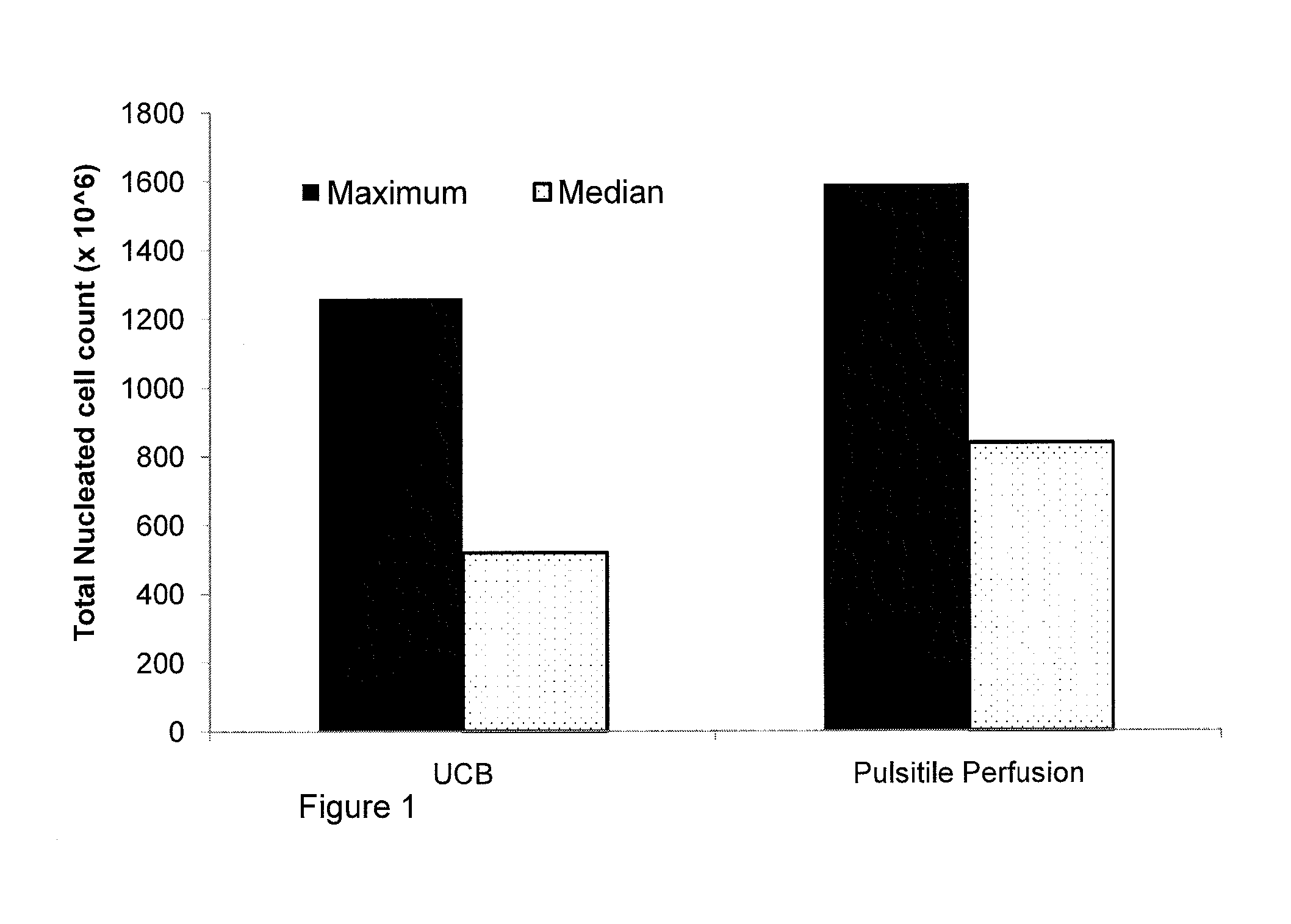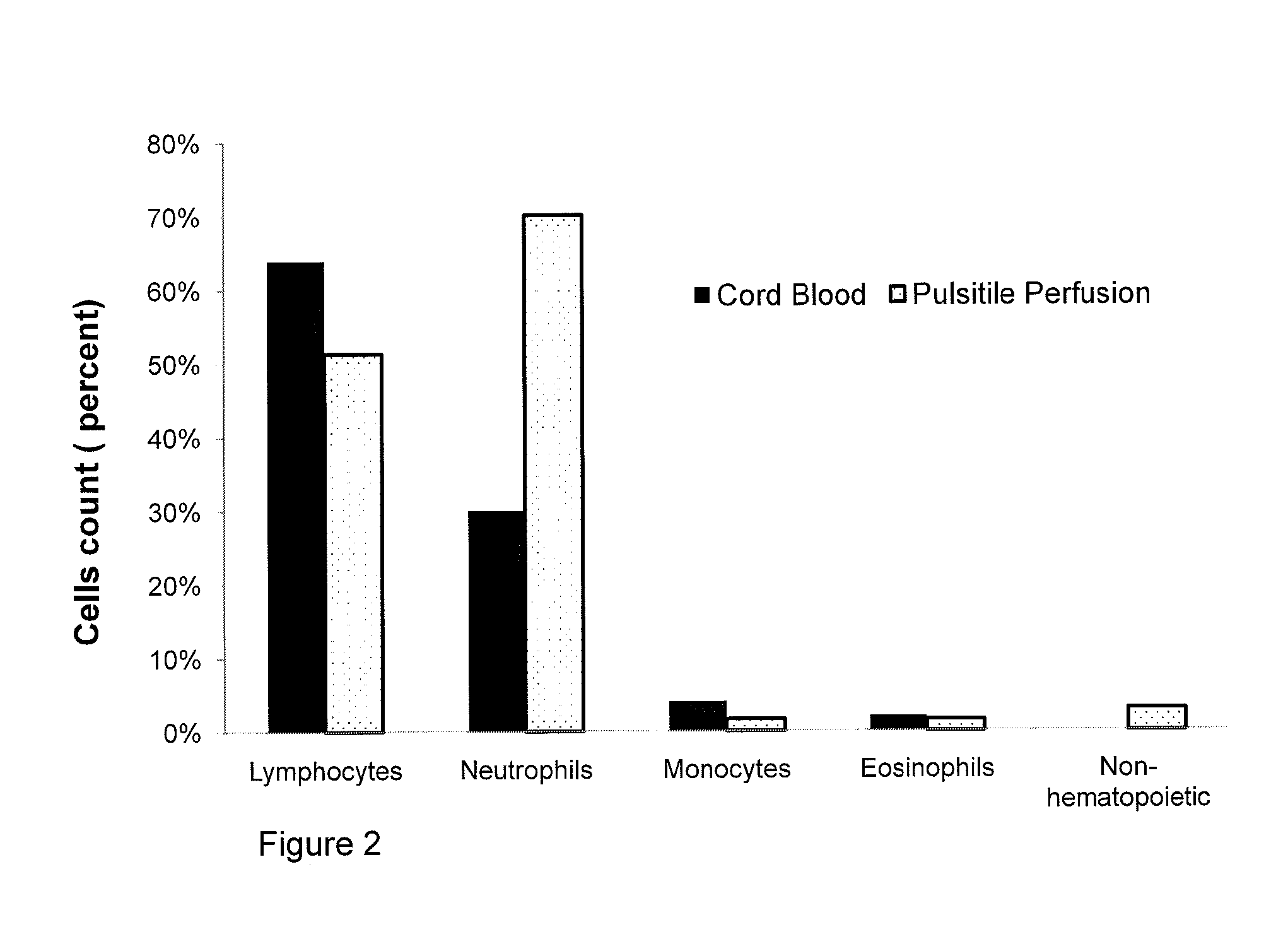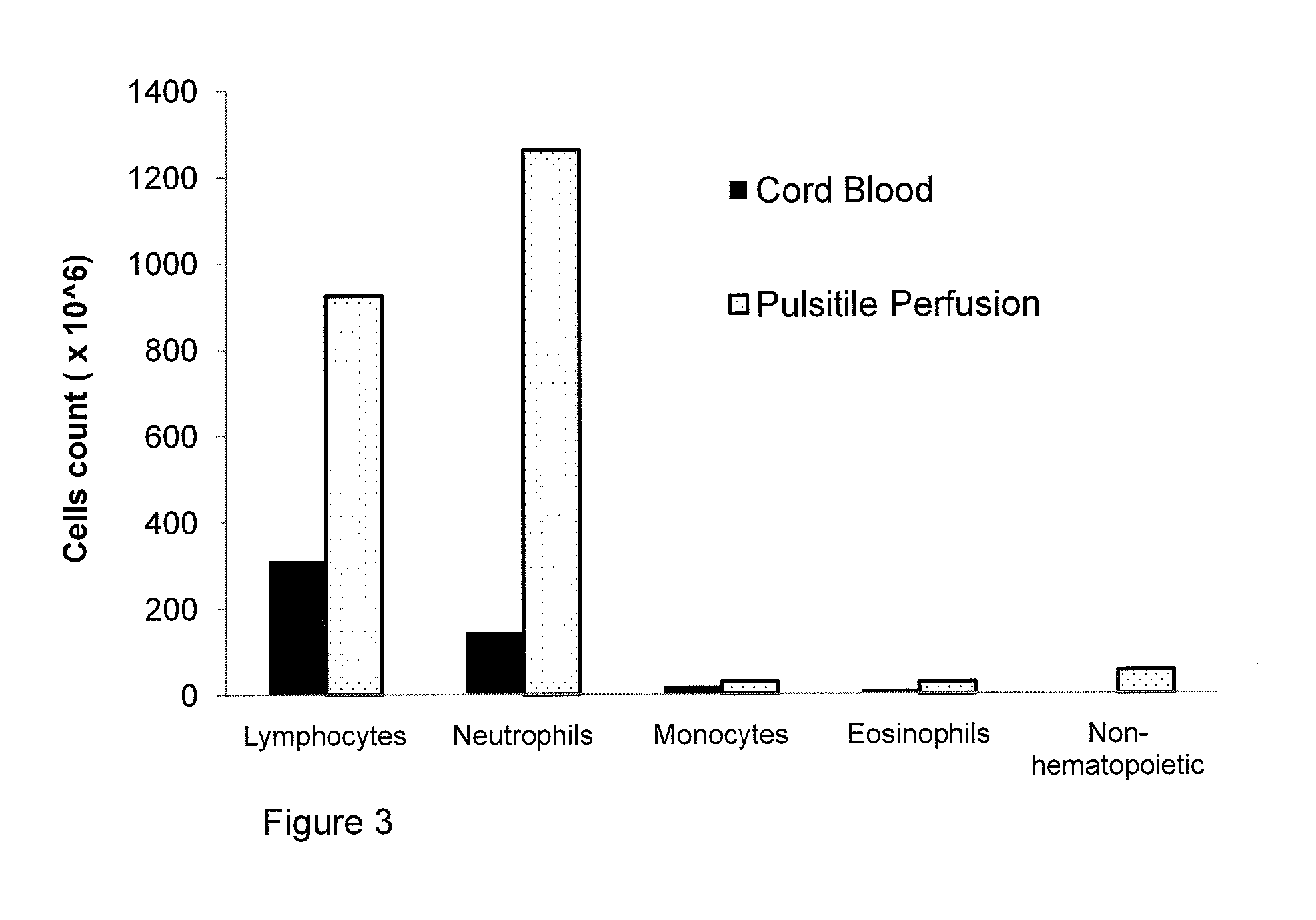Method for isolation of afterbirth derived cells
a cell culture and afterbirth technology, applied in the field of isolating cells from afterbirth tissue, can solve the problems of difficult collection of ucb, insufficient useable stem cells, and widespread failure of cell culture approaches to grow more transplantable hsc from ucb
- Summary
- Abstract
- Description
- Claims
- Application Information
AI Technical Summary
Benefits of technology
Problems solved by technology
Method used
Image
Examples
example 1
Isolation of Cells
[0049]The cells may be isolated by centrifugation using a standard laboratory centrifuge where the material is placed into the centrifuge and centrifuged for 10 minutes at 1,000 rpm to separate out the desired cells from the other extracted components. The cells are then aseptically separated with sterile pipettes and placed into sterile conical tubes with normal saline and or Lactated Ringers solution and centrifuged again for 10 minutes at 1,000 rpm to wash the cells. The cells are again aseptically separated from the wash solution with sterile pipettes and then placed into another set of conical tubes with Ficol Solution and placed in the centrifuge at 1,200 rpm for 5 minutes. The cells may then be aseptically separated from the Ficol Solution with sterile pipettes and placed into sterile tubes for the appropriate storage method. When this process has been completed, a sample of the cells (1 micro liter) will be placed in a flow cytometer to quantify the total n...
example 2
Isolation of Cells Using a Cell Saver
[0050]Another example of a suitable centrifugation method involves placement of the obtained cells into a cardiotomy on a Hemanetics Cell Saver machine. Once all of the obtained cells have been placed into the cardiotomy, the cells will be drained into a centrifuge bowl or basin. After draining, the cell saver may be started in the spin or separation mode. Usually approximately 5 minutes is required to complete this section. The Cell Saver will automatically switch to wash after the separation mode and wash the cells with either a 500 ml bag of Normal Saline or Lactated Ringers solution. The Cell Saver will then separate the wash from the cells and switch to a second wash with Ficol Solution. The Cell Saver may then wash the cells with the Ficol Solution after which the Cell Saver may automatically switch to a centrifuge mode and separate the cells from the Ficol Solution. The Cell Saver may then transfer the cells into a sterile storage bag. Whe...
example 3
Isolation of Cells Using a COBE® 2991 Blood Cell Processor
[0051]Another suitable centrifugation method may employ the COBE® 2991 Blood Cell Processor (Gambro BCT, Inc.) to separate the cells and white blood cells from red blood cells, plasma and platelets, and then wash, for example with Normal Saline or Lactated Ringer's solution (or Ficols solution).
[0052]As discussed above, a centrifugation process may be used to remove the original perfusate solution from the nucleated cells. Typically, this process also removes plasma, platelets and red cells leaving stem cells and white blood cells. However, if it would be preferred to have any of the plasma, platelets and red cell blood components in the product, the centrifugation process can be modified to alter the cells that are removed. For example, the wash cycle of the COBE® 2991 cell sorter system can be adjusted.
[0053]A preferred time period for the centrifugation process is to spin the collected perfusate for a time range of about 7...
PUM
| Property | Measurement | Unit |
|---|---|---|
| temperature | aaaaa | aaaaa |
| temperature | aaaaa | aaaaa |
| systolic perfusion pressure | aaaaa | aaaaa |
Abstract
Description
Claims
Application Information
 Login to View More
Login to View More - R&D
- Intellectual Property
- Life Sciences
- Materials
- Tech Scout
- Unparalleled Data Quality
- Higher Quality Content
- 60% Fewer Hallucinations
Browse by: Latest US Patents, China's latest patents, Technical Efficacy Thesaurus, Application Domain, Technology Topic, Popular Technical Reports.
© 2025 PatSnap. All rights reserved.Legal|Privacy policy|Modern Slavery Act Transparency Statement|Sitemap|About US| Contact US: help@patsnap.com



